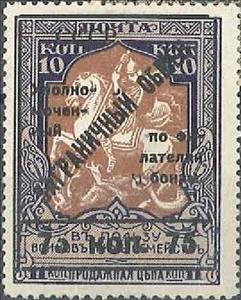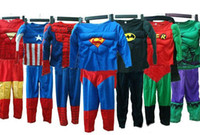Stamp: St. George the Victorious, Slaying the Dragon (Soviet Union, USSR 1925)
St. George the Victorious, Slaying the Dragon (Soviet Union, USSR 1925)
01 January (Soviet Union, USSR ) within release Exchange Control goes into circulation Stamp St. George the Victorious, Slaying the Dragon face value 75 Russian kopek
| Stamp St. George the Victorious, Slaying the Dragon in catalogues | |
|---|---|
| Michel: | Mi: SU TK12B |
| Yvert et Tellier: | Yt: SU US12a |
| Stanley Gibbons: | Sg: SU T431b |
Stamp is square format.
10 kopek charity stamp of 1915 surcharged "СССР уполно-мочен-ный ЗАГРАНИЧНЫЙ ОБМЕН. по фи-лателии и бонам. 75 КОП. 75" in black This is a revenue stamp which was used to pay a tax on stamp exchanges carried out through the Soviet Philatelic Association. It was affixed to incoming or outgoing envelopes containing stamps and it would receive a violet or black rectangular cancel. Listed under "Gebühren für Briefmarken-Tauschsendungen" (Fees for postage stamp exchanges) in Michel, "Timbres d'Usage Spécial" (special usage stamps) in Yvert and "Exchange Control" in Barefoot.Also in the issue Exchange Control:
- Stamp - Allegory: Mother Russia Patronizes the Orphans of War face value 1;
- Stamp - Farewell to the Don Cossack face value 1;
- Stamp - Farewell to the Don Cossack face value 1;
- Stamp - St. George the Victorious, Slaying the Dragon face value 75;
- Stamp - Ancient Russian Knight, Bogatyr Ilya Muromets - Surch & Opt face value 5;
- Stamp - Ancient Russian Knight, Bogatyr Ilya Muromets - Surch & Opt face value 15;
- Stamp - Ancient Russian Knight, Bogatyr Ilya Muromets - Surch & Opt face value 50;
- Stamp - Farewell to the Don Cossack - Surch & Opt face value 10;
- Stamp - Farewell to the Don Cossack - Surch & Opt face value 1;
- Stamp - Farewell to the Don Cossack - Surch & Opt face value 1;
- Stamp - Mother Russia Patronizes the Orphans of War - Surch & Opt face value 25;
- Stamp - St. George the Victorious, Slaying the Dragon - Surch & Opt face value 75;
Stamp St. George the Victorious, Slaying the Dragon it reflects the thematic directions:
Headgear may be worn for protection against cold (such as the Canadian tuque), heat, rain and other precipitation, glare, sunburn, sunstroke, dust, contaminants, etc. Helmets are worn for protection in battle or against impact, for instance when riding bicycles or motor vehicles. There are also hats that are worn for protection from the cold
The horse (Equus ferus caballus) is one of two extant subspecies of Equus ferus. It is an odd-toed ungulate mammal belonging to the taxonomic family Equidae. The horse has evolved over the past 45 to 55 million years from a small multi-toed creature, Eohippus, into the large, single-toed animal of today. Humans began to domesticate horses around 4000 BC, and their domestication is believed to have been widespread by 3000 BC. Horses in the subspecies caballus are domesticated, although some domesticated populations live in the wild as feral horses. These feral populations are not true wild horses, as this term is used to describe horses that have never been domesticated, such as the endangered Przewalski's horse, a separate subspecies, and the only remaining true wild horse. There is an extensive, specialized vocabulary used to describe equine-related concepts, covering everything from anatomy to life stages, size, colors, markings, breeds, locomotion, and behavior.
A man is an adult male human. Prior to adulthood, a male human is referred to as a boy (a male child or adolescent).
Philately (/fɪˈlætəli/; fih-LAT-ə-lee) is the study of postage stamps and postal history. It also refers to the collection and appreciation of stamps and other philatelic products.While closely associated with stamp collecting and the study of postage, it is possible to be a philatelist without owning any stamps. For instance, the stamps being studied may be very rare or reside only in museums.
In clothing, a suit is a set of garments made from the same cloth, usually consisting of at least a jacket and trousers. Lounge suits (also known as business suits when sober in colour and style), which originated in Britain as country wear, are the most common style of Western suit. Other types of suit still worn today are the dinner suit, part of black tie, which arose as a lounging alternative to dress coats in much the same way as the day lounge suit came to replace frock coats and morning coats; and, rarely worn today, the morning suit. This article discusses the lounge suit (including business suits), elements of informal dress code.





